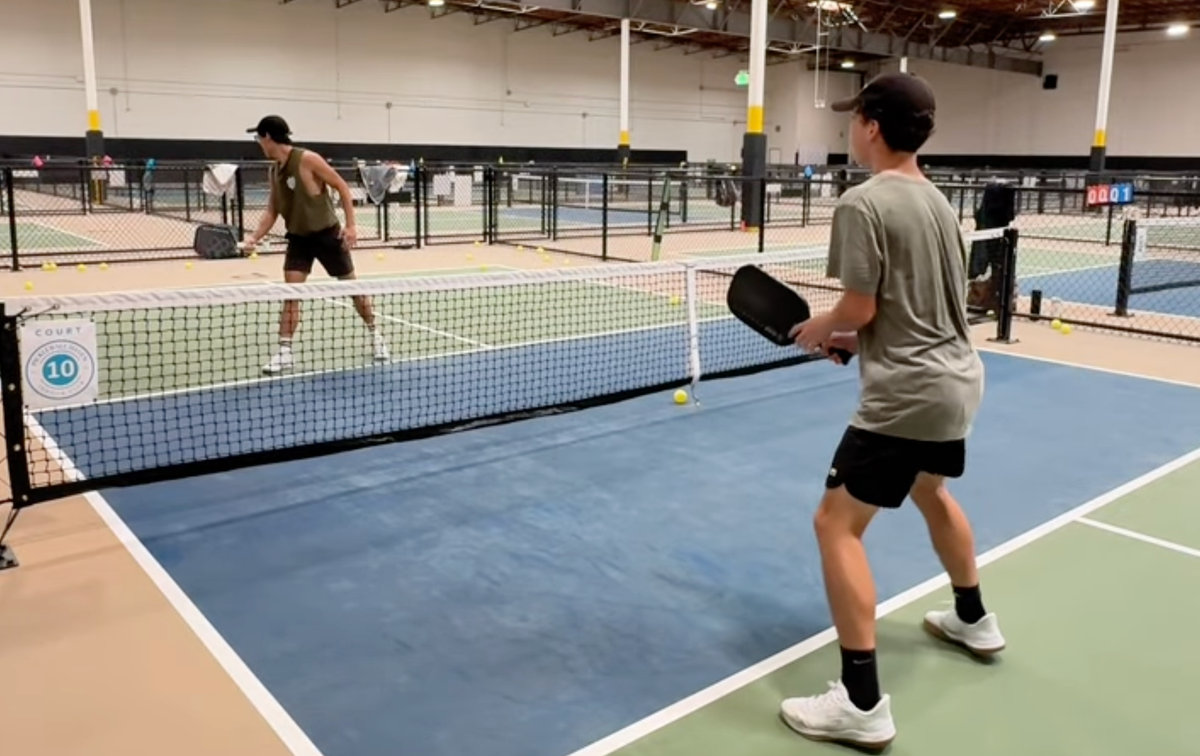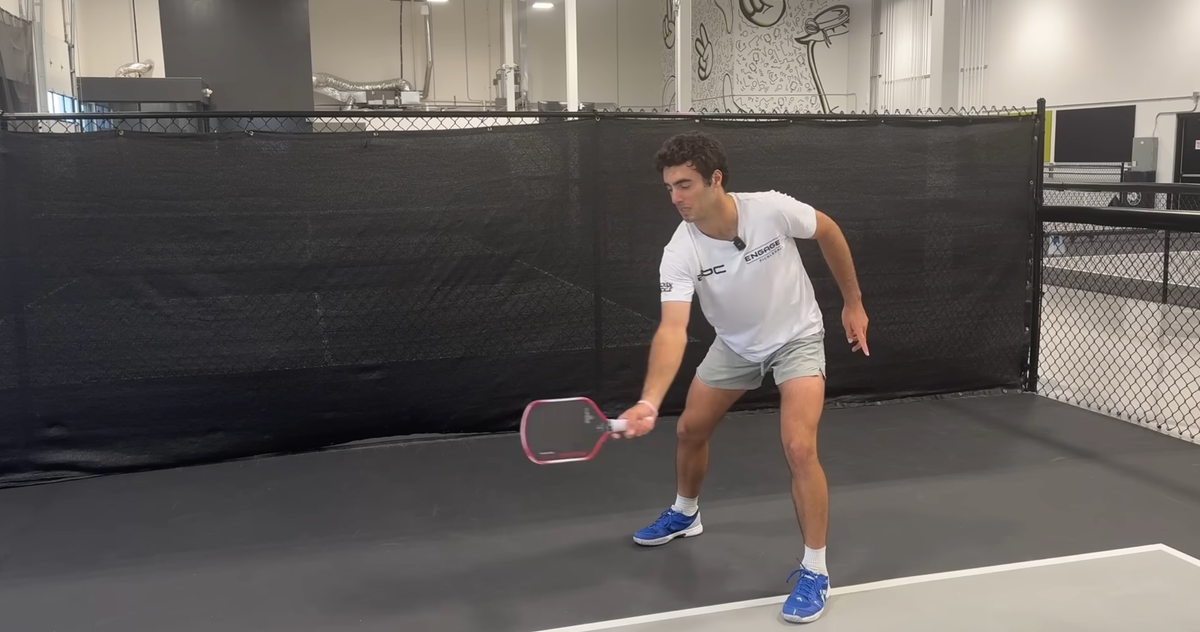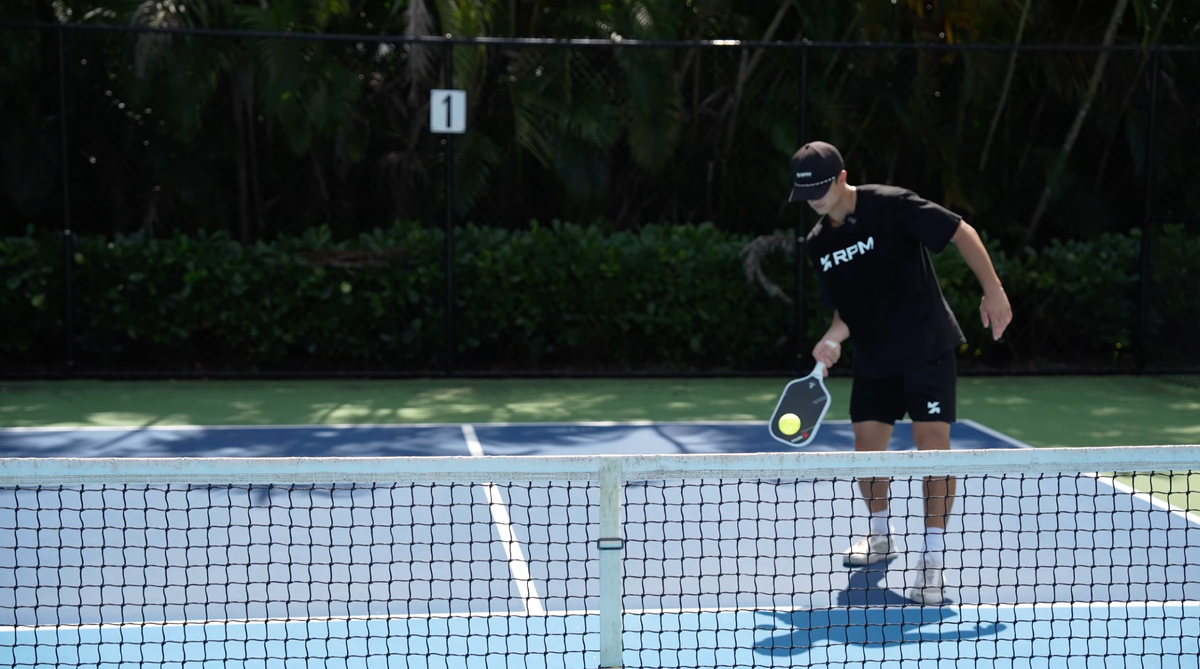
Hey guys, it’s Kyle from ThatPickleballGuy. By the end of this article, you’ll know the six doubles strategies I wish I knew when I first started playing pickleball.
Alright, we’re talking about what to do on the return. Let’s say we have the serving team, and we’re the returning team. If we’re returning, I’m going to be up at the kitchen line, and my doubles partner is going to be further back (Figure 1).

#1 Return and Run
Tip number one is to return and run to the kitchen. A big mistake people make is returning and staying back. You don’t want to return and stay because you’re not as dangerous when you’re back at the baseline (Figure 2).

The mistake is returning and staying back; what you want to do is return and run to the kitchen line.
When my doubles partner and I are both at the kitchen line and our opponents are back at the baseline, we have the advantage. You’re most dangerous at the kitchen line, and your best chance to get there is right after the return because they have to let the ball bounce (two-bounce rule). So, return and run to the kitchen line fast to gain that advantage.
#2 Stance and Punch
Now that we’re at the kitchen line, here’s the second strategy: stance and punch. After the return, you want to be in an active stance, with your paddle up and ready to punch the ball. Many people stand too upright, and their paddle is too low. Instead, have short, compact swings to avoid overhitting. That’s key to mastering the fourth shot, which is the shot right after the opponent’s third shot.
#3 Serve and Stay
Moving on to number three: serve and stay. We just talked about returning, but now let’s focus on the serve. A common mistake is stepping into the court after serving, which makes you vulnerable to a deep return because remember you have to let the ball bounce a second time. You don’t want to be backpedaling since it can throw you off balance and lead to weak shots. The strategy is to serve and stay back, then move forward to the kitchen line only after reading the return.
#4 Third-Shot Tactics
Now, number four: third-shot tactics. Most players, especially beginners, rely on one tactic—the drive. While driving the ball is a good option, it’s not the only one. The other tactic is the third-shot drop.
A third shot drop is a soft, controlled shot hit from the baseline that lands in the opponent’s kitchen (non-volley zone), forcing them to hit up on the ball. The goal is to neutralize the advantage of the opposing team’s positioning and create an opportunity to approach the net, where most points are won. It’s used to slow the pace of the game and set up a more strategic, controlled rally. So, mix it up between driving and dropping to apply different kinds of pressure on your opponents.
If you’re driving, aim at the person running in because it’s harder to return a ball on the move. If you’re dropping, try placing the ball in the middle of the court or to your opponent’s backhand side.
#5 Hold The Line
Next, number five: hold the line. When you’re at the kitchen line, avoid being sporadic or retreating. Holding your ground keeps you balanced and ready to attack. If you back off the line, you lose your ability to be aggressive, and you’re more likely to make mistakes. Instead, focus on short, controlled movements like sliding steps rather than running back and forth.
Dink To Their Backhand
Finally, number six: dink to their backhand. This is a more advanced strategy. When you’re in a dinking rally, aim for your opponent’s backhand repeatedly. They’re more likely to make errors or pop the ball up for you to attack. Over time, you’ll win more points by exploiting this weakness.
If this article helped you, be sure to click the share button up top with your doubles partner! These six strategies can make a big difference in your game.
Think you know pickleball inside and out? Challenge yourself with ThatPickleball IQ Test and see if you can score a perfect 10 out of 10!
See you guys next time 👊🏻
Anuncie Aqui / Advertise Here
Sua marca para o mundo Pickleball! / Your brand for the Pickleball world!

 English
English  Spanish
Spanish  Portuguese
Portuguese  German
German  Italian
Italian  Japanese
Japanese  French
French  Polish
Polish  Russian
Russian  Netherlands
Netherlands  Hungarian
Hungarian  Turkish
Turkish  Videos
Videos  Pickleball Portal
Pickleball Portal









 English (US) ·
English (US) ·  Portuguese (BR) ·
Portuguese (BR) ·